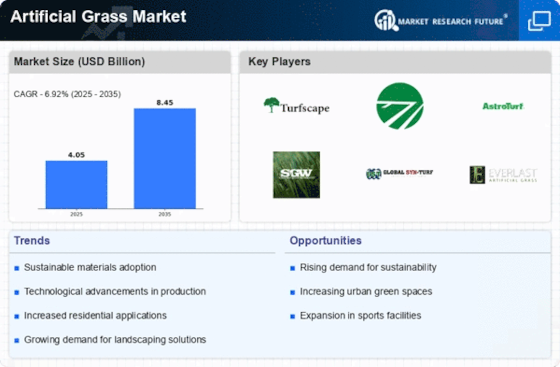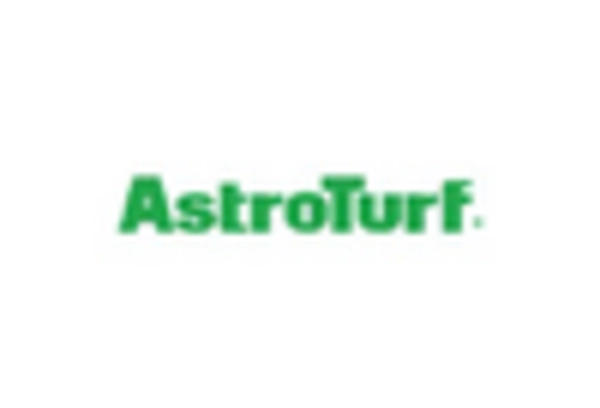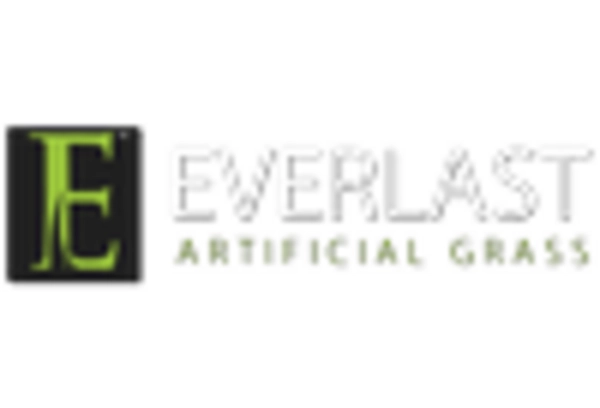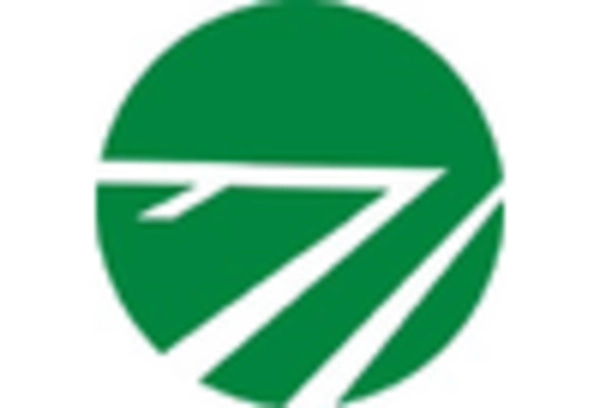Urban Development Trends
Urbanization continues to reshape landscapes, creating a pressing need for efficient land use, which in turn propels the Artificial Grass Market. As cities expand, the availability of green spaces diminishes, prompting urban planners to seek alternatives that maximize utility without compromising aesthetics. Artificial grass provides a viable solution for urban environments, allowing for the creation of green areas in limited spaces, such as rooftops and balconies. This trend is particularly evident in metropolitan areas where the demand for recreational spaces is high. The Artificial Grass Market is likely to benefit from this urban development trend, as more city planners and developers recognize the advantages of incorporating artificial grass into their projects.
Technological Innovations
Technological advancements in the production and design of artificial grass are significantly influencing the Artificial Grass Market. Innovations such as improved fiber technology and advanced manufacturing processes have led to the development of more realistic and durable products. For instance, the introduction of polyethylene and polypropylene fibers has enhanced the aesthetic appeal and longevity of artificial grass. Additionally, the integration of infill materials that mimic the feel of natural grass has further elevated consumer satisfaction. As a result, the market is witnessing a surge in demand, with estimates suggesting that the artificial grass segment could reach a valuation of several billion dollars in the coming years, underscoring the impact of technology on the Artificial Grass Market.
Sustainability Initiatives
The increasing emphasis on sustainability appears to be a pivotal driver for the Artificial Grass Market. As environmental concerns gain traction, consumers and businesses alike are seeking eco-friendly alternatives to natural grass. Artificial grass, often made from recycled materials, offers a solution that reduces water consumption and eliminates the need for harmful pesticides and fertilizers. In fact, the market for artificial grass is projected to grow at a compound annual growth rate of approximately 10% over the next several years, driven by this sustainability trend. Furthermore, municipalities are increasingly adopting artificial grass in public parks and recreational areas to conserve water resources, thereby enhancing the appeal of the Artificial Grass Market.
Sports and Recreational Applications
The growing popularity of sports and recreational activities is a significant driver for the Artificial Grass Market. With an increasing number of sports facilities and recreational areas being constructed, the demand for high-quality artificial turf is on the rise. Sports organizations are opting for artificial grass due to its durability and low maintenance requirements, which are essential for high-traffic areas. The market for artificial grass in sports applications is projected to expand, with estimates indicating a potential increase in revenue as more facilities adopt this technology. This trend not only enhances the performance of sports fields but also contributes to the overall growth of the Artificial Grass Market.
Cost-Effectiveness and Maintenance Savings
The cost-effectiveness of artificial grass is emerging as a crucial driver for the Artificial Grass Market. Homeowners and businesses are increasingly recognizing the long-term savings associated with artificial grass, particularly in terms of maintenance and water usage. Unlike natural grass, which requires regular mowing, watering, and fertilization, artificial grass offers a low-maintenance alternative that can significantly reduce ongoing costs. This financial incentive is particularly appealing in regions facing water scarcity, where the use of artificial grass can lead to substantial savings on water bills. As awareness of these benefits spreads, the Artificial Grass Market is likely to experience continued growth, driven by the economic advantages of adopting artificial grass solutions.


















Leave a Comment